When you buy a product through our links below, we may earn money from our affiliate partners to help support the site. However, this does not affect our evaluation or recommendation of each product. See our list of partners & how we get paid here. You can also learn our process for reviewing tennis gear here.
After testing, studying, and researching all the major tennis racquet brands, we have our picks for the best power-oriented tennis racquets.
Whether you are a beginner or a more advanced tennis player, you have a lot of choices when it comes to powerful racquets. Below, we’ll review the best tennis racquets for power to help you choose the right one for your skill level, budget, and preferences. Before we get into the specifics, here is the list of top power racquets for 2025.
The 7 Best Tennis Racquets for Power
The table below has the top power racquets based on skill level and playing style.
These are not necessarily in the best order for you. Depending on your skill level, athletic ability, and experience, some racquets will be better for you than others. We recommend reading our detailed reviews of each racquet to choose the best option for you.
Click the links below to order your racquet from Tennis Warehouse.
| Best For | Racquet |
|---|---|
| Best for any players who want easy, controlled power from the baseline. | Solinco Blackout Jump to Review |
| Best for easy power and spin. The Extreme is easy to swing & comfortable on contact. | Head Extreme MP Jump to Review |
| Best for players looking for a comfortable racquet with excellent power & feel. | Yonex Ezone 100 Jump to Review |
| Best for developing topspin skills. This racquet is easy to swing as well. | Prince Ripstick 100 Jump to Review |
| Best for players seeking a comfortable racquet that is easy to swing. It offers solid power & spin. | Head Boom MP Jump to Review |
| Best for maximizing spin with power on groundstrokes & serves. | Babolat Pure Drive Jump to Review |
| Best for players looking for explosive power on their groundstrokes. | Wilson Ultra 100 Jump to Review |
Stop paying full price for tennis gear! Get deals on shoes, racquets & more up to 70% off.
What Makes a Tennis Racquet Have More Power?
Before we review each racquet in more detail, let’s look at what actually makes a tennis racquet powerful.
Frame Size: Larger Racquets Have More Power
The frame size refers to the part of the racquet that holds the strings together. Smaller frames can be as small as 90 square inches, typically for advanced players. However, the best tennis racquets for beginners can be up to 115 square inches, and sometimes more.
For power, the general rule is that a bigger frame size leads to more power because it allows the ball to sink deeper into the strings, resulting in a more significant rebound effect.
Still, as with anything, there is an optimal frame size for power. Most players should choose a frame size between 97 and 105 square inches.
Weight: Heavier Racquets Can Offer Extra Power
The weight refers to the weight of the racquet. This is often measured without strings in the racquet but is sometimes measured with strings.
One of the most popular tennis racquet sellers, Tennis Warehouse, measures the strung weight of each racquet. When comparing, make sure you are consistent.
For power, generally, a heavier racquet will have more plow through, or ability to redirect the ball. Nevertheless, if the racquet is too heavy for the user, it will result in a slower swing, leading to less power.
Usually, beginner tennis racquets are lighter in weight (less than 11 ounces), while the best tennis racquets for advanced players are heavier (over 11 ounces).
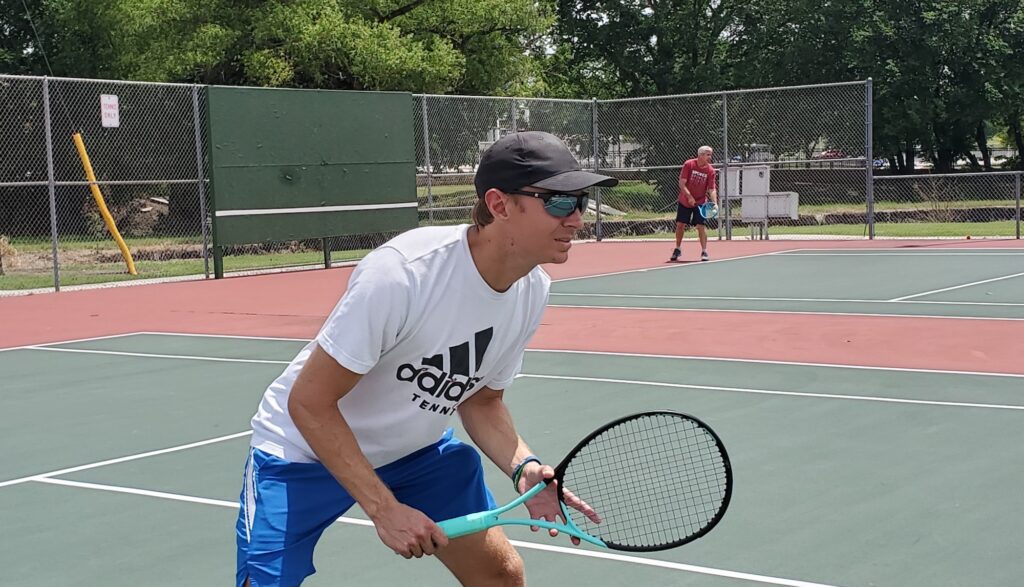
Balance: How the Weight is Distributed Affects Power
The balance point of a racquet is defined as the point along the length of the racquet where the weight is split evenly between the head and the handle. An evenly balanced racquet would have its balance point exactly in the middle of its length.
Since most adult racquets are 27 inches long (68.59 cm) a balance point of 13.5 inches (34.3 cm) is halfway up the racquet. Therefore the racquet is considered to be “evenly balanced”. If the balance point is greater than 13.5 in, it is considered a “head heavy” racquet, less than 13.5 in would be “head light”.
A head heavy racquet produces more power as the higher mass at the head of the racquet enables a racquet to be swung with greater momentum than a head light racquet.
Still, if the racquet is too head heavy, slowing your swing, it will reduce your power. This is why finding an equilibrium between balance and comfort is important. If you find a racquet that is almost perfect, consider learning how to customize your racquet to get the balance exactly the way you want it.
String Pattern: Tight vs Open String Patterns
String pattern refers to the number of main and cross strings in the racquet. Common string patterns include 16×19, 18×19, and 18×20.
The higher the numbers, the closer the strings will be together. This is called a “tight” string pattern and helps players with control and feel. Smaller numbers of mains and crosses make for an “open” string pattern which can help with power and spin.
If you need help deciding which type of string to use, see our list of the best tennis strings. You can also narrow your search by first learning about the different types of strings available.
Beam Thickness: Thicker Typically Means More Power
The beam thickness refers to the racquet frame’s width when looking at it from a profile view. This is usually measured in millimeters. A racquet with a wider beam will typically have increased power while smaller beams will offer better control and feel.
This is often correlated with stiffness.
Stiffness: A Stiff Racquet Has More Power
The stiffness of a racquet refers to how flexible it is. This is on a scale from 0 to 100 with 100 being the stiffest. A stiffer racquet will have increased power and stability but less comfort and feel. Players with elbow tendonitis should consider a less stiff, more flexible racquet.
For increased power, stiffer racquets flex (or bend) less at impact, keeping more energy in the ball, leading to more power in your shots.
Length: Longer Racquets Create More Leverage
The length of a tennis racquet is typically 27 inches. Oversized racquets may be up to 28 inches in length which adds power to your shots, due to increased leverage.
Most players should use a standard 27 inch racquet.
How String Type & Tension Affect Power
The string type and tension you use can be just as important as the racquet when it comes to hitting with power.
Generally, looser tensions will lead to more power due to the increased trampoline effect.
Read our guide on the best tennis strings to find the right strings for your racquet.
How to Choose a Tennis Racquet with Power
Now that you understand what makes a tennis racquet create power, you can start considering different options.
How Your Skill Level Affects Power
In general, beginners will need more power and advanced players seek more control.
Beginners need more power
Players first learning the game of tennis should start with a light racquet featuring a larger head size. This will help them make contact with the ball consistently while learning to rally without wearing out their arm as their muscles get used to the game.
Look for:
- Larger head size: over 100 square inches
- Lighter frame: less than 11 ounces
- More power
Intermediate players need a balanced racquet
Intermediate tennis racquets have a reduced head size and add a little more weight.
Look for:
- Medium head size: 98 to 105 square inches
- Medium weight frame: 10.1 to 11.5 ounces
- Balance of power & control
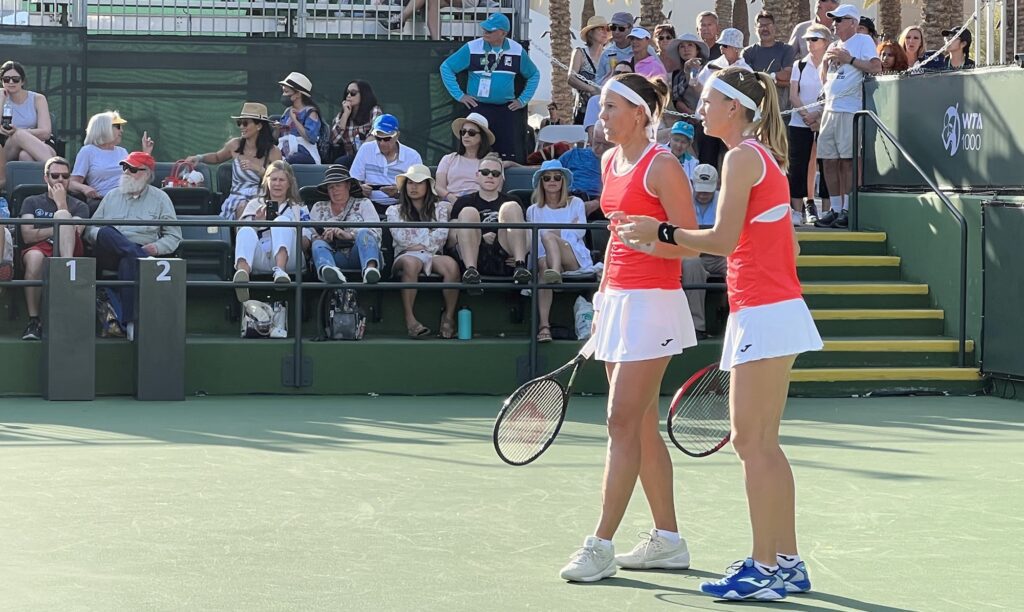
Advanced players need less power & more control
Advanced players should be using 95-100 square inch racquets that allow them to play with control, feel, and precision. These benefits will allow players to play more confidently as they go for their shots.
Look for:
- Smaller head size: 100 or fewer square inches
- Heavier weight frame: Over 11 ounces
- Racquets optimized for control and feel
This chart will give you a high-level idea of what to look for in a tennis racquet.
| Racquet Specifications | Beginner Players Only | Intermediate & Some Beginner | Advanced & Some Intermediate |
|---|---|---|---|
| Head Size (sq. inches) | 107 – 115 | 100 – 110 | 95 – 100 |
| Length (inches) | At least 27.5 | 27 – 28 | 27 – 27.5 |
| Weight (strung) | Under 11 Ounces | 10.1 – 11.5 Ounces | Over 11 Ounces |
| Price | Under $150 | $100 & up | $150 & up |
| Power vs Control | More Power | Balanced Racquet | More Control |
Goals: Budget, Frequency of Play, Preference & Brand
When buying a new tennis racquet, you need to consider your goals as well.
What is your budget?
One of the most important things to consider when buying a racquet is how much you would like to spend.
Racquets can be found as low as $25 and as high as several hundred dollars. Most of the newer racquets are in the $150 to $250 range.
If money is an issue, you can also consider buying a used racquet at Tennis Warehouse or another site.
How often will you play tennis?
If you don’t plan to play tennis often, consider more arm-friendly racquets and strings.
If you play more often, testing several racquets and determining what is the most compatible with your strokes is ideal.
Personal Preferences: What do you want from your racquet?
You’ll also want to decide what specifically you want from your racquet. If you play a lot of singles, for example, you may want a racquet that adds topspin to your groundstrokes. If, however, you play mostly doubles and like to go to the net, then you’ll want a racquet with more control for your volleys.
Do you prefer a specific brand?
Some people prefer to play with a certain brand of racquet because they enjoy the grip style, head shape, and/or other factors that make different brands unique.
It’s important to stay open-minded about different brands, but over time, you will likely learn to like one or a few brands.
3 Steps to Find the Perfect Tennis Racquet for Your Game
Free checklist with 27 racquet recommendations
Reviews of the Top 7 Racquets for Power
Below, we’ll review each of the top racquets on our list in more detail.
#1 – Solinco Blackout
- Skill Level: Most skill levels
- Where It Excels: Power at the baseline & on serves.
- What It Lacks: Not the best for control, but still solid.
The Solinco Blackout is a relatively new racquet, but it impressed us enough to earn its way onto our rankings. It has fantastic power and surprisingly good feel, even at the net. It also has exceptional spin potential. There is also a lighter version for younger players, an extended length version for increased power, and even an extended length plus version for unmatched reach and power.
Specifications
- Head Size: 100 sq. in.
- Strung Weight: 11.3 oz.
- Length: 27 in.
- String Pattern: 16×19
#2 – Head Extreme MP
- Skill Level: Any Skill Level
- Where It Excels: Power, spin, & easy to maneuver.
- What It Lacks: Not great for control or volleys.
The Extreme is a great racquet for most players. Beginners will enjoy the power level and large sweet spot. Intermediate players can use this racquet to develop their topspin and slice skills. Advanced players will be able to control the point with aggressive strokes and add power to their serve.
Specifications
- Head Size: 100 sq. in.
- Strung Weight: 11.2 oz.
- Length: 27 in.
- String Pattern: 16×19
#3 – Yonex Ezone 100
- Skill Level: Intermediate to Advanced
- Where It Excels: Great combination of power & feel.
- What It Lacks: Not great stability for an advanced racquet resulting in loss of control on some volleys.
Yonex is a fast-growing tennis brand that makes some of the best racquets in the world. The Ezone is a well-balanced racquet built with great power, comfort, and feel. It has a 100-square-inch frame and open string pattern for plenty of spin. Any player who wants controlled power from the baseline will like this racquet.
Specifications
- Head Size: 100 sq. in.
- Strung Weight: 11.2 oz.
- Length: 27 in.
- String Pattern: 16×19
#4 – Prince Ripstick 100
- Skill Level: Beginner to Intermediate
- Where It Excels: Easy to swing & generate spin/power.
- What It Lacks: Not great control or stability against fast-paced balls.
The Ripstick is built for spin. The open string pattern (16×18) helps beginners and intermediate players learn topspin. This racquet has an easy-to-swing frame with O-Ports that improve racquet head speed. You’ll generate easy power on groundstrokes and serves.
Specifications
- Head Size: 100 sq. in.
- Strung Weight: 11.2 oz.
- Length: 27 in.
- String Pattern: 16×18
#5 – Head Boom MP
- Skill Level: Beginner to Intermediate
- Where It Excels: Power, spin, maneuverability, & comfort. This is a balanced racquet for high-level beginner to high-level intermediate players.
- What It Lacks: Stability on volleys & returning fast serves.
The Head Boom is a new racquet that is built for the modern club tennis player. It has a very comfortable 100-inch frame that is easy to swing. You’ll create plenty of power and spin from the baseline. The lightweight handling lets you move around the court with ease and it adds MPH to your serve as well.
Specifications
- Head Size: 100 sq. in.
- Strung Weight: 11.0 oz.
- Length: 27 in.
- String Pattern: 16×19
#6 – Babolat Pure Drive
- Skill Level: Most skill levels
- Where It Excels: Power at the baseline & on serves.
- What It Lacks: Not the best for control, but still solid.
The Pure Drive has been one of the top tennis racquets in the world for players of all abilities for years. Used by several professional tennis players, this racquet is known for its power from the baseline. It also helps you create good spin, and offers solid stability, in a comfortable frame. It also tops our list as the best tennis racquet for women.
Specifications
- Head Size: 100 sq. in.
- Strung Weight: 11.2 oz.
- Length: 27 in.
- String Pattern: 16×19
#7 – Wilson Ultra 100
- Skill Level: Beginner to High-Level Intermediate
- Where It Excels: Power from the baseline.
- What It Lacks: Control, stability, and arm-friendliness.
The Ultra is built for power. This racquet is designed with a thick, stiff frame to increase the pace of all your shots. The racquet has an explosive feel on contact. When you hit the sweet spot, the ball responds with maximum power.
Specifications
- Head Size: 100 sq. in.
- Strung Weight: 11.2 oz.
- Length: 27 in.
- String Pattern: 16×19
Conclusion – Our Pick for the Best Overall Tennis Racquet for Power
The best overall tennis racquet for power is the Babolat Pure Drive. Not only does it provide effortless power from the baseline and on serves but it also is very playable for people of all skill levels.
It helps you create good spin and offers solid stability in a comfortable frame. Although you might find a racquet that works better for you, the Pure Drive is a staple for many players.
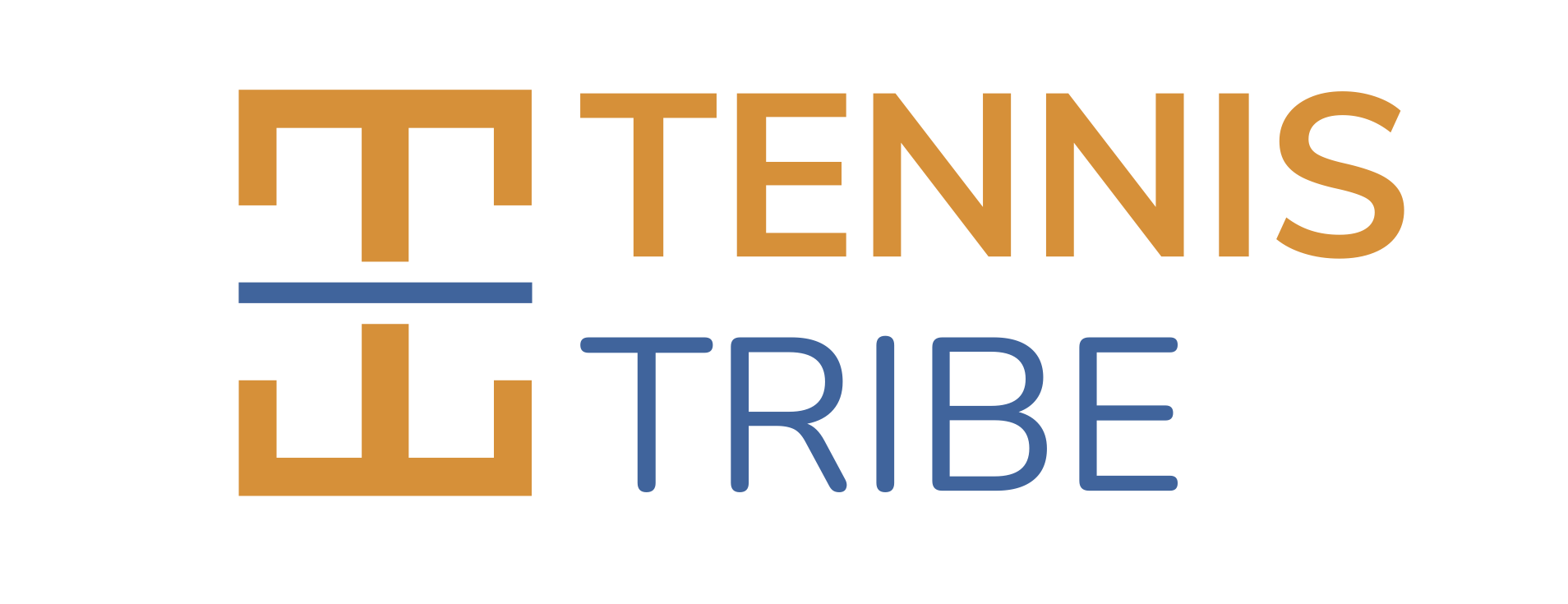


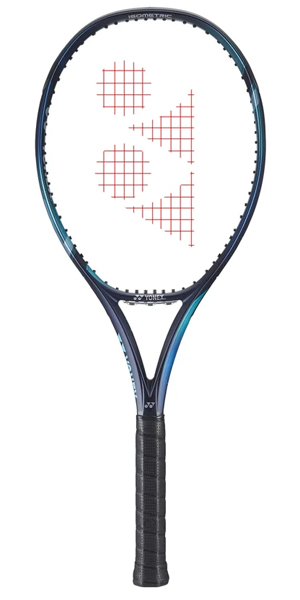
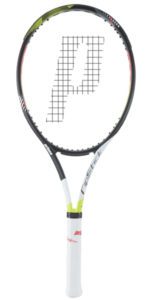
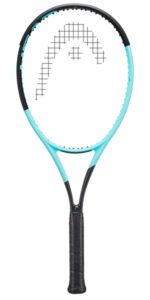
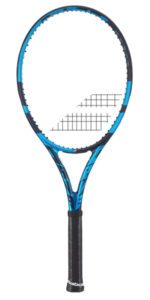
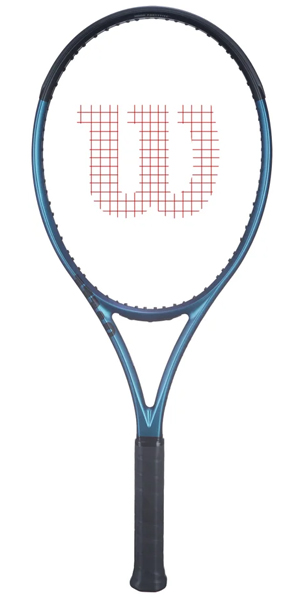
Leave a Reply